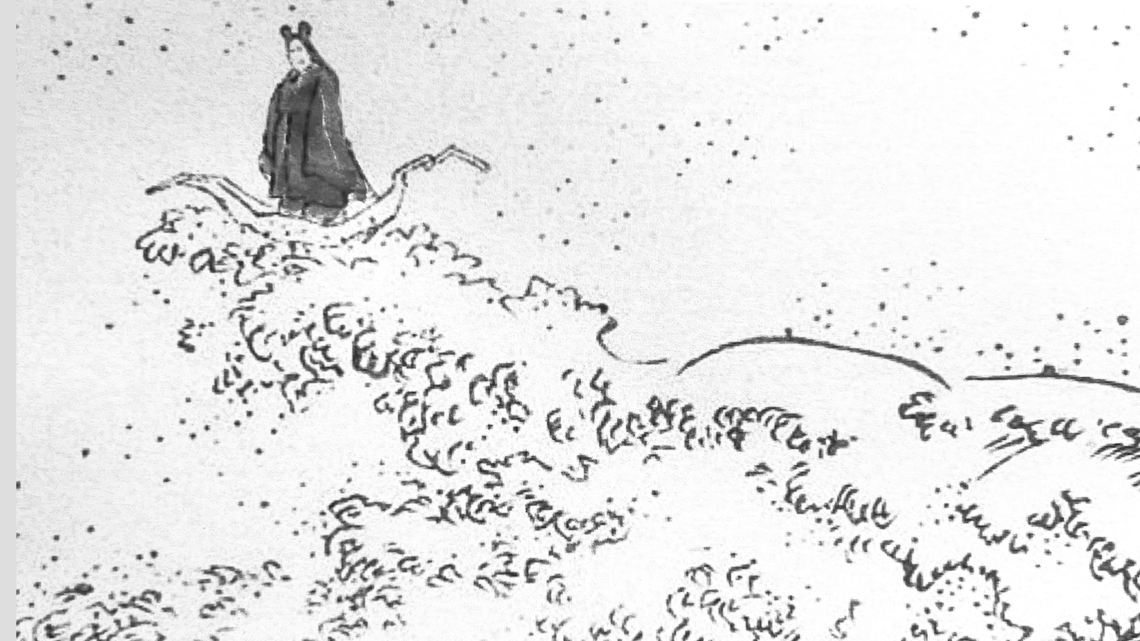Japanese Miniatures: Sukunabiko
April 18, 2024
There is something majestic about the arrival of the shinto dwarf god Sukunabiko (AKA The small lord of renown) to the shores of Izumo province in Japan. Dressed in the wings of a moth and carried by a tiny boat made from a sweet potato vine, Sukunabiko calmly rides an enormous wave, perhaps symbolizing harmony with the forces of nature. His arrival is noticed by another deity, Ōkuninushi, who is intrigued by his smallness and elegant appearance. When Ōkuninushi tries to pick him up he quickly finds out Sukunabiko is not to be messed with as he is bitten in the cheek. The attention for this incident within the story clearly empasizes that small stature deserves equal respect. Despite this testy first encounter they become friends and set out to unify and rule Japan.
As deity Sukunabiko is associated with the practices of healing, the arts of medicine, magic, agriculture and food production (sake in particular), pest control (insects and birds), and knowledge. He’s placed between the known and the unknown, the controllable and the uncontrollable, between this world and the world of the gods. In mythology small characters are regularly imagined to be closely related to nature and natural forces. Think of the airy fairies and Tinker bell, earth-dwelling gnomes and Dactyloi, water nimphs, and the Yundi tsundi of the Cherokee forrests. There is an intimacy between the small and their natural habitat which leads to intimate knowledge. As such Sukunabiko’s ability to surf a giant wave is less surprising than it seems. In Shinto, the spirit known as kami are not separate from nature, but are of nature. They are manifestations of musubi, the interconnecting energy of the universe, and are considered exemplary of what humanity should strive towards. In our opinion that includes small size.